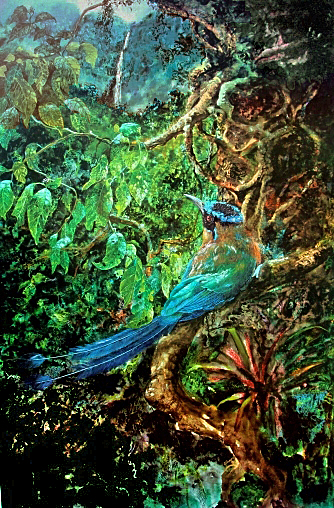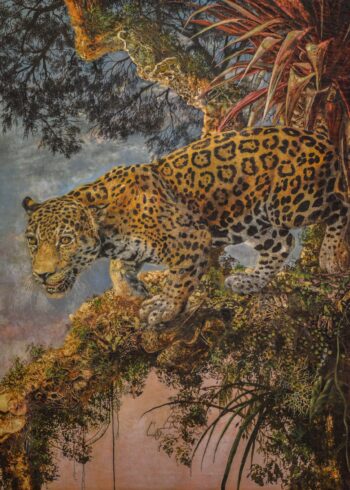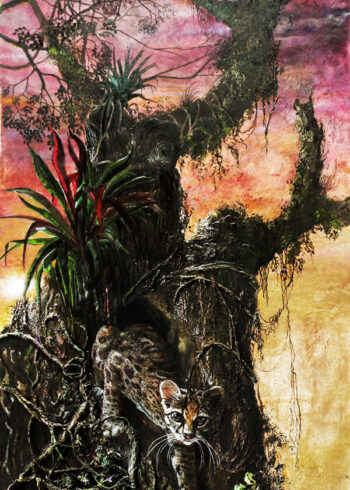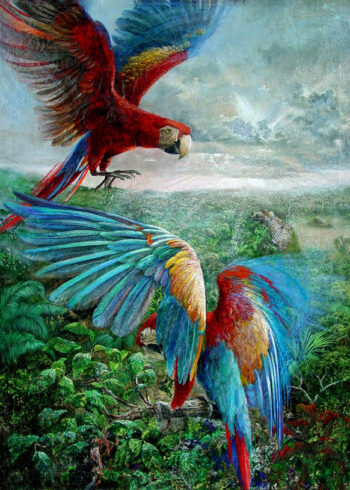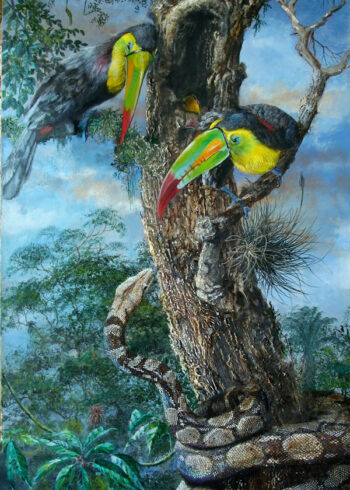- Please choose product options by visiting Jungle Dawn.
Prints of this painting are not available.
For those searching for jewels in the jungle, there is a glistening crown worn by the blue-crowned motmot. This elusive bird prefers thick, verdant vegetation with filtered sunlight, beams of which may catch its iridescent olive green to blue feathers with a rust-colored breast. However, its black face and head are crowned with a blue adornment.
Description
For those searching for jewels in the jungle, there is a glistening crown worn by the blue-crowned motmot. This elusive bird prefers thick, verdant vegetation with filtered sunlight, beams of which may catch its iridescent olive green to blue feathers with a rust-colored breast. However, its black face and head are crowned with a blue adornment.
The blue crowned motmot has a distinct feature in its spatula shaped tail, which is formed by the loss of barbs on the two long, upper central tail feathers. The center shafts after molt are feathered throughout the length, only becoming spatulate after the natural loss of the barbs. I was told that the spatula shaped tail feathers were a result of the birds themselves removing the barbs, but it has been since found that the barbs are loosely attached at that region and detach themselves from the feather shaft on their own. This was a disappointment to learn the truth. The myth is much more romantic.
Motmots typically do not vocalize frequently. In the hours just prior to dawn and at dusk you may hear a soft “whoot, whoot, whoot, whoot” from the male and the female generally will respond with a single “whoot”.
This painting is set in the area of the Mountain Pine Ridge near the Hidden Valley Falls. Off in the distance is the falls cascading 1000 feet to the canyon floor rushing to find and empty into the Belize River near Belmopan at the village of Roaring Creek.


